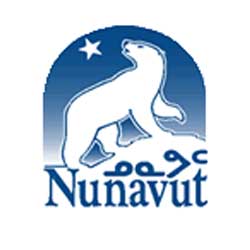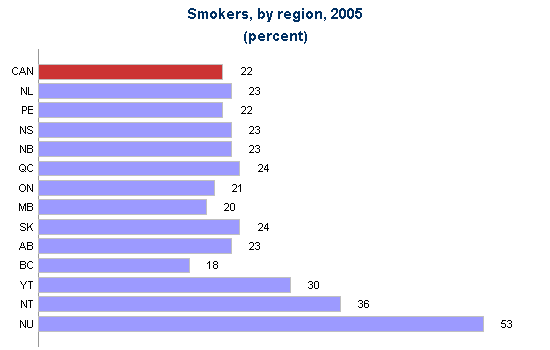 October 13, 2009 - Nunavut territory has the highest rate of smoking in Canada: 53 per cent of people over the age of 12 surveyed by Statistics Canada reported lighting up daily — even though cigarettes here can cost $16 a pack. A pack-a-day habit in the North can cost $6,000 a year, a price magnified in families with three or four smokers. “It’s taking money out of their food budgets,” says Dr. Ron Aspinall, a family physician who works in the Nunavut hamlet of Rankin Inlet.
October 13, 2009 - Nunavut territory has the highest rate of smoking in Canada: 53 per cent of people over the age of 12 surveyed by Statistics Canada reported lighting up daily — even though cigarettes here can cost $16 a pack. A pack-a-day habit in the North can cost $6,000 a year, a price magnified in families with three or four smokers. “It’s taking money out of their food budgets,” says Dr. Ron Aspinall, a family physician who works in the Nunavut hamlet of Rankin Inlet.
Nunavut’s smoking rate is more than double the national average (22 per cent) and is considerably higher than those in the Northwest Territories (36 per cent) and Yukon (30 per cent).
Nunavut (meaning "our land") is the largest and newest federal territory of Canada; it was separated officially from the Northwest Territories on April 1, 1999 via the Nunavut Act and the Nunavut Land Claims Agreement Act, though the actual boundaries had been established in 1993. Nunavut is both the least populated and the geographically largest of the provinces and territories of Canada. It has a population of 29,474, mostly Inuit, spread over an area the size of Western Europe. Inuit (meaning "man" or "person") is a general term for a group of culturally similar indigenous peoples inhabiting the Arctic regions of Canada, Greenland, and Alaska.
NU = Nunavut

Among Nunavut’s Inuit, 85 per cent of the territory’s population, the rates are even worse. The 2006 Aboriginal Peoples Survey found that 64 per cent of the territory’s Inuit over the age of 15 light up daily; another eight per cent called themselves occasional smokers.
The tobacco problem is shared by Inuit across Canada and by many First Nations communities.
Lung cancer rates among Canada’s Inuit are the highest in the world. Lung cancer is now responsible for half of all cancer deaths in Nunavut.
Nunavut’s newborns and infants are the most unhealthy in the country, in part because of the staggering number of pregnant women who smoke, (Nunavut Territory has the highest rate of babies born pre-term in Canada..) Infant mortality in the territory is three times the Canadian average.
Nunavut’s mothers are the youngest in the country with an average age of 24.7; the teen pregnancy rate is eight times the national average. It means many pregnancies are unplanned. And expectant mothers addicted to nicotine often find it difficult to give up cigarettes when a major new stress has just been added to their lives.
The territory already has a tough set of anti-smoking laws. In 2004, Nunavut’s Tobacco Control Act made the territory one of the first jurisdictions to ban smoking in public places, including bars. The law made it illegal to sell cigarettes to anyone under 19, banned cigarette vending machines, and eliminated most tobacco retail displays.
Reference: Extreme smoking in Nunavut ‘Someone always has a cigarette’ by Andrew Duffy, The Ottawa Citizen, 10/10/2009.
Related news briefs: Canada - more governments encouraged to ban sales of tobacco in pharmacies..; Canada's Yukon passes comprehensive smoking ban..; Tobacco displays are on their way out in an increasing number of countries...


0 comments:
Post a Comment